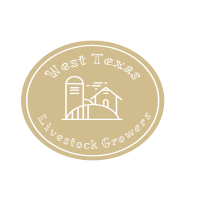
As esteemed cattle producers, your expertise is invaluable in understanding the critical role of measuring pasture forage intake. Your knowledge and experience in properly assessing the amount of forage consumed by grazing animals is essential to optimizing their nutrition and overall well-being. It allows us to make informed decisions about grazing management, pasture utilization, and livestock nutrition planning.
Your effective measurement of pasture forage intake not only helps maximize the use of available resources and prevent overgrazing but also plays a crucial role in maintaining the sustainability of grazing lands. By understanding and quantifying our livestock’s forage consumption, we can tailor management practices to promote healthy growth and efficient feed utilization. Your actions, as experienced cattle producers, can significantly contribute to the environmental sustainability of our operations.

 Fertilizer costs have increased significantly over the last few decades, even more so over the last couple of years. For example, nitrogen fertilizer has doubled in just the last two years. With the way things are going, it does not look like they will change for the better any time soon.
Fertilizer costs have increased significantly over the last few decades, even more so over the last couple of years. For example, nitrogen fertilizer has doubled in just the last two years. With the way things are going, it does not look like they will change for the better any time soon. Spring is almost around the corner. The temperatures will soon rise, and the grass will begin to grow again. For most people, pasture management comes to mind when temperatures rise, but that is not necessarily the case. It is vital to get a start on it now.
Spring is almost around the corner. The temperatures will soon rise, and the grass will begin to grow again. For most people, pasture management comes to mind when temperatures rise, but that is not necessarily the case. It is vital to get a start on it now. Mesquite trees are the most popular “
Mesquite trees are the most popular “ A soil test can be a very effective tool in a producer’s toolbox. It can tell you the kind of nutrients that are available and the amounts that are present. Really, it is the foundation of any plan to improve the output of your pastures.
A soil test can be a very effective tool in a producer’s toolbox. It can tell you the kind of nutrients that are available and the amounts that are present. Really, it is the foundation of any plan to improve the output of your pastures. A good pasture is the foundation of any profitable livestock operation. It provides the forages needed not only to sustain but also to allow the livestock to grow. Having enough forages for all of the animals is essential to keep your feed costs down to a manageable level. However, keeping a pasture at this level can be complicated.
A good pasture is the foundation of any profitable livestock operation. It provides the forages needed not only to sustain but also to allow the livestock to grow. Having enough forages for all of the animals is essential to keep your feed costs down to a manageable level. However, keeping a pasture at this level can be complicated. A wheat pasture is a valuable resource for many cattle operations. This plant is a valuable source of high-quality forage when most other forages are low in quantity and quality. The unique climate in the Southern plains, like here in Texas, can allow producers to use wheat as both a forage and a grain crop. This dual purpose can potentially increase the overall profitability of many operations.
A wheat pasture is a valuable resource for many cattle operations. This plant is a valuable source of high-quality forage when most other forages are low in quantity and quality. The unique climate in the Southern plains, like here in Texas, can allow producers to use wheat as both a forage and a grain crop. This dual purpose can potentially increase the overall profitability of many operations. Grazing management in the fall can have an impact on your future forage production. The intensity of your grazing animals determines what state they will be in. Also, grazing during the winter may be limited depending on what forages you have available.
Grazing management in the fall can have an impact on your future forage production. The intensity of your grazing animals determines what state they will be in. Also, grazing during the winter may be limited depending on what forages you have available. Performing a soil test is one of the most underutilized range management tools. Knowing your soil’s fertility and what nutrients are provided is crucial. Often, producers just put out the same fertilizer they always have and hope for the best.
Performing a soil test is one of the most underutilized range management tools. Knowing your soil’s fertility and what nutrients are provided is crucial. Often, producers just put out the same fertilizer they always have and hope for the best. Prickly pear, as well as other cactus species, is a common problem in pastures. It is not an uncommon sight to have many cacti growing out in a pasture. They can interfere with the movement of livestock and cause serious health problems.
Prickly pear, as well as other cactus species, is a common problem in pastures. It is not an uncommon sight to have many cacti growing out in a pasture. They can interfere with the movement of livestock and cause serious health problems.

